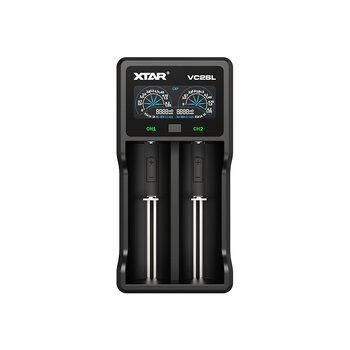Professional dual-channel compact processor charger
Xtar VC2SL
for Li-ion and Ni-MH batteries in sizes 18650, AA, AAA and others
Key features
- SUPPORT FOR PROTECTED BATTERIES IN SIZES 20700 AND 21700
- power bank function
- charging Li-ion batteries controlled by a three-stage processor TC/CC/CV charging process
- CHARGING NI-MH batteries using the CC method
- two independent charging channels
- three charging currents - 1x 2A / 2x 1A / 2x 0,5A
- VA LCD display informing the charging capacity, cell voltage, charging current and internal resistance of the cell
- powered by any charger with a 2A USB socket
- small dimensions - easy to carry
- reactivation function of deeply discharged cells
- protection: short-circuit, thermal, against reverse polarity
VC2SL is a professional processor charger with a three-stage TC/CC/CV charging process and an LCD display. It charges 1-2 Li-ion cells 3.6 / 3.7V and Ni-MH of any capacity in sizes AAA/R03, AA/R6, R14/C, 10440, 14500, 14650, 16340, 17500, 17670, 18350, 18500, 18650, 18700, 20700, 21700, 22650, 25500, 26650 - including the protected versions of the 20700 and 21700 batteries!
The backlit VA LCD display of the Xtar VC2SL charger shows real-time information about the charger's operating status: battery charge expressed in mAh, battery voltage, charging current and internal resistance of the cell.
What is the TC/CC/CV charging method? It is a three-stage charging process for Li-ion cells to ensure that the cell is kept in good condition by charging with the right current at each stage and completing the charging process at the right time.
The individual stages of the TC/CC/CV process are:
- TC phase: cells discharged below 2.9V are 'woken up' with a lower current.
- CC phase: after reaching 2.9V, the cell is charged with a constant current of 0.5A to 2A (depending on the power source used).
- CV phase: when the cell is almost charged, the charger switches to charging with a decreasing current until a voltage of 4.2V is reached on the cell. When 4.2V is reached, the charging process is completed - the battery is fully charged.
Charged batteries left in the charger will undergo a natural self-discharge process. Charging will resume when the voltage on the battery drops below 3.9V.
The Xtar VC2SL charger has the function of reactivating deeply discharged cells and cells with a voltage of 0V. Many chargers on the market are not able to charge such batteries. This is where the Xtar VC2SL charger comes in handy, which in many cases allows you to 'rescue' such cells. Simply insert the deeply discharged battery into the VC2SL charger, as with normal charging - the charger will detect the discharged cell and attempt to reactivate it.
Remark! Cells discharged below a certain level are irreversibly damaged and may not be possible to reactivate. Too deep discharge of Li-ion batteries should be avoided - this can lead to a significant reduction in their durability and capacity or lead to their complete failure.
Xtar VC2SL has an additional power bank function with a 5V USB output with a maximum power of 1A. Any Li-ion battery with a minimum capacity of 2200mAh can be used as a power source. Unlike the VC2S, the charger can be connected to the power supply and at the same time charge the device connected to the USB socket! When you connect the device to the USB output, the charger will automatically show the output voltage and charging current. REMARK! The USB output is electronically protected against overload and turns off automatically when the power consumption exceeds 1A.
Complete with the Xtar VC2S charger we get a USB type C cable . To power the charger, you only need any charger with a USB port, e.g. from a phone, or a USB socket, or a computer with a free USB port. The recommended power of the charger is 2.1A (2100mA).
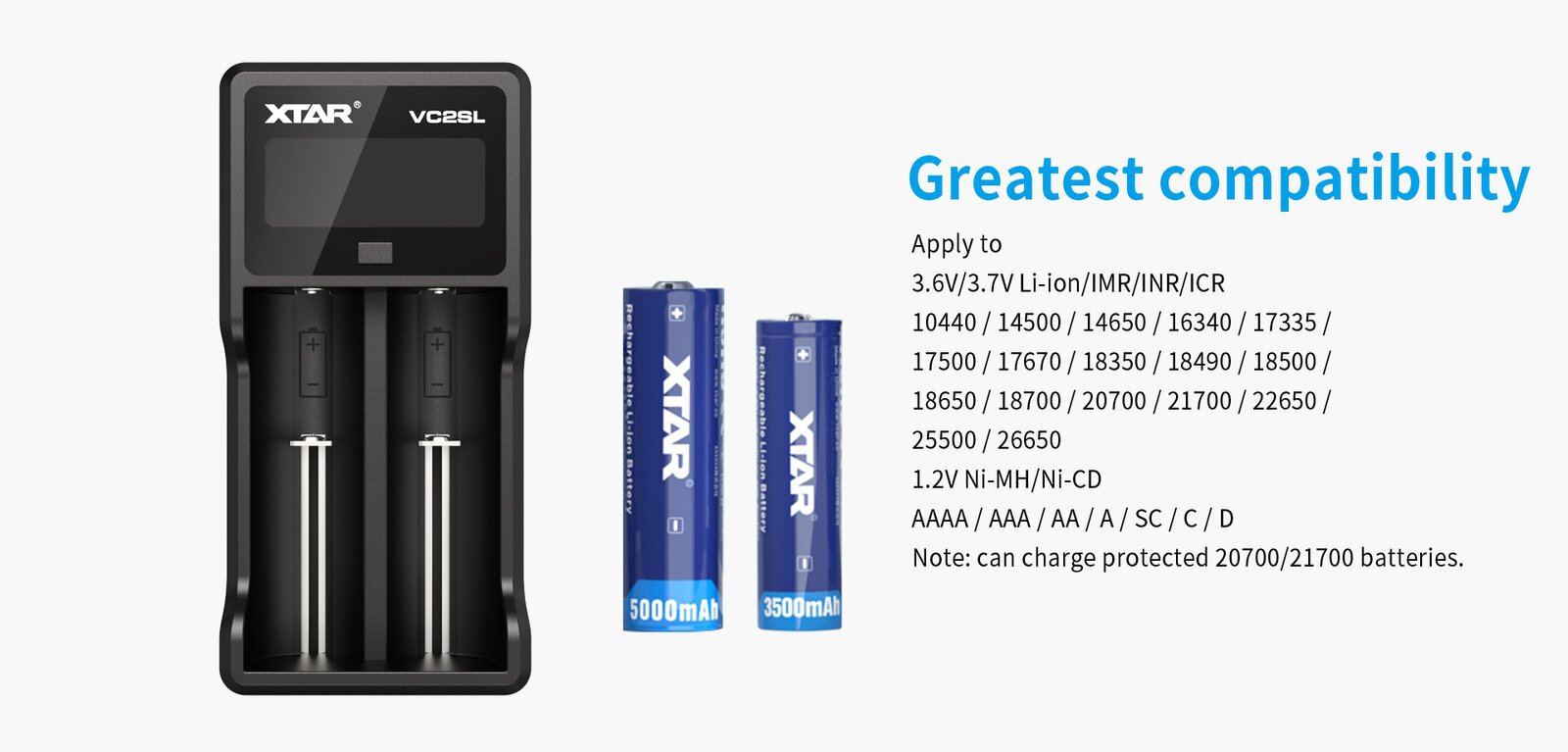
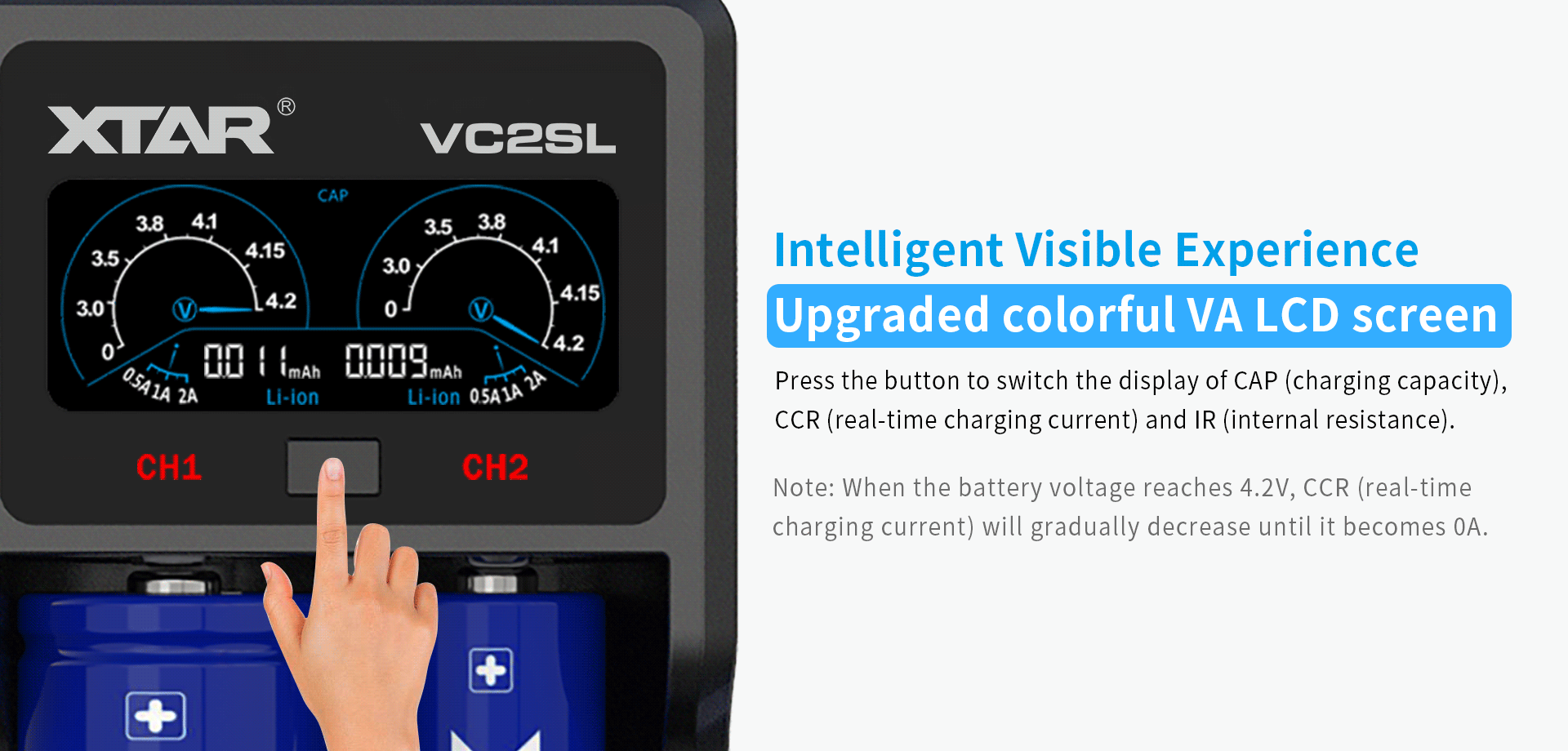
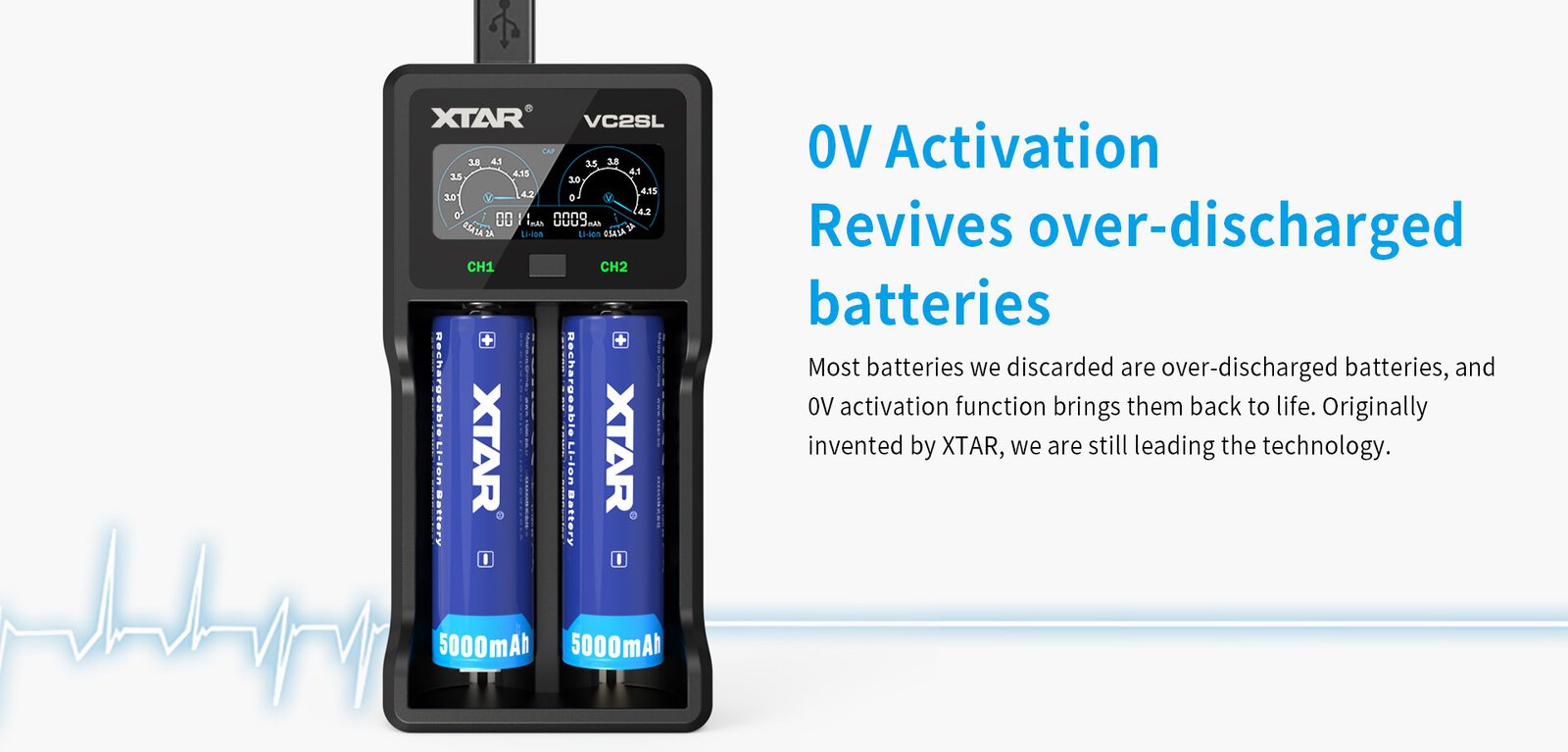
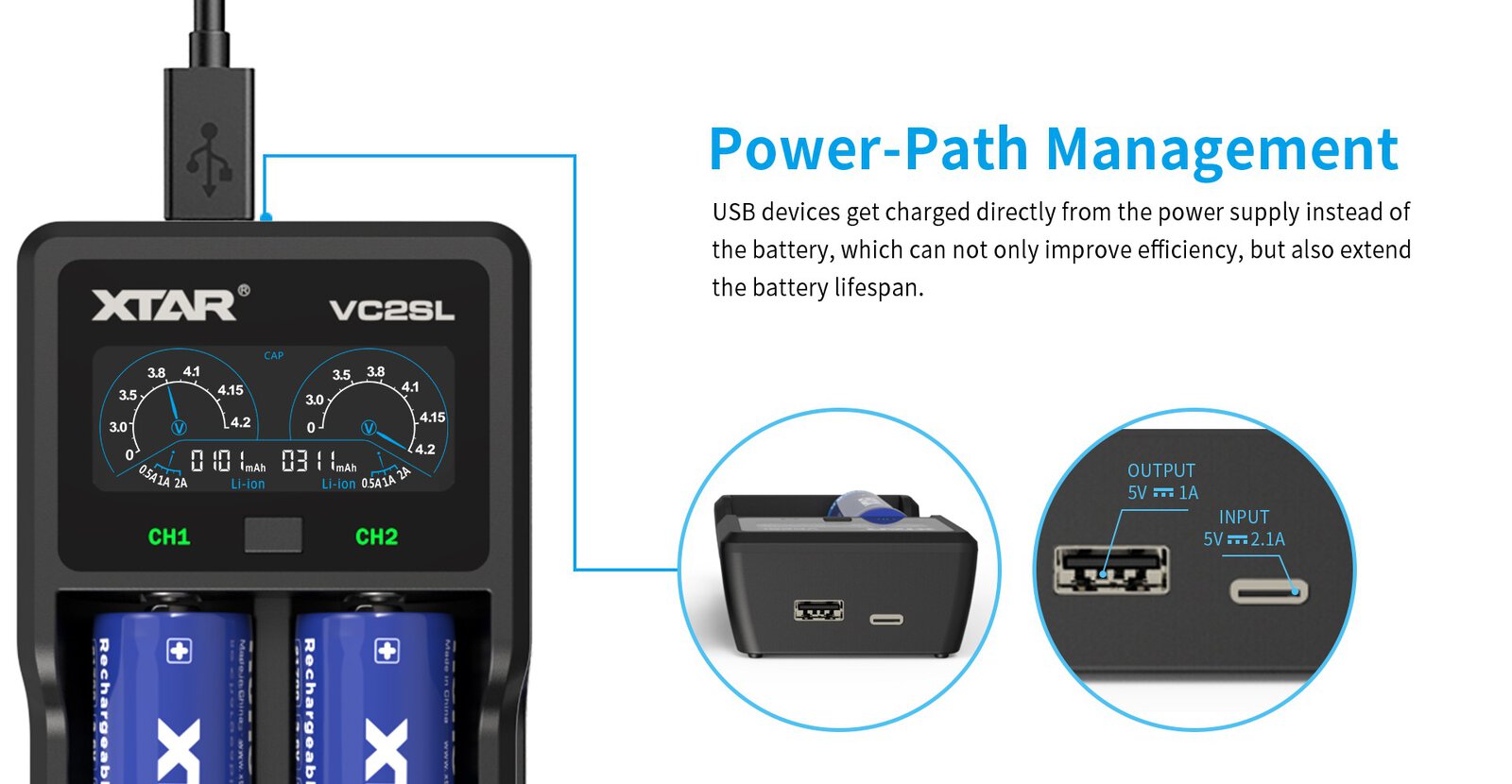
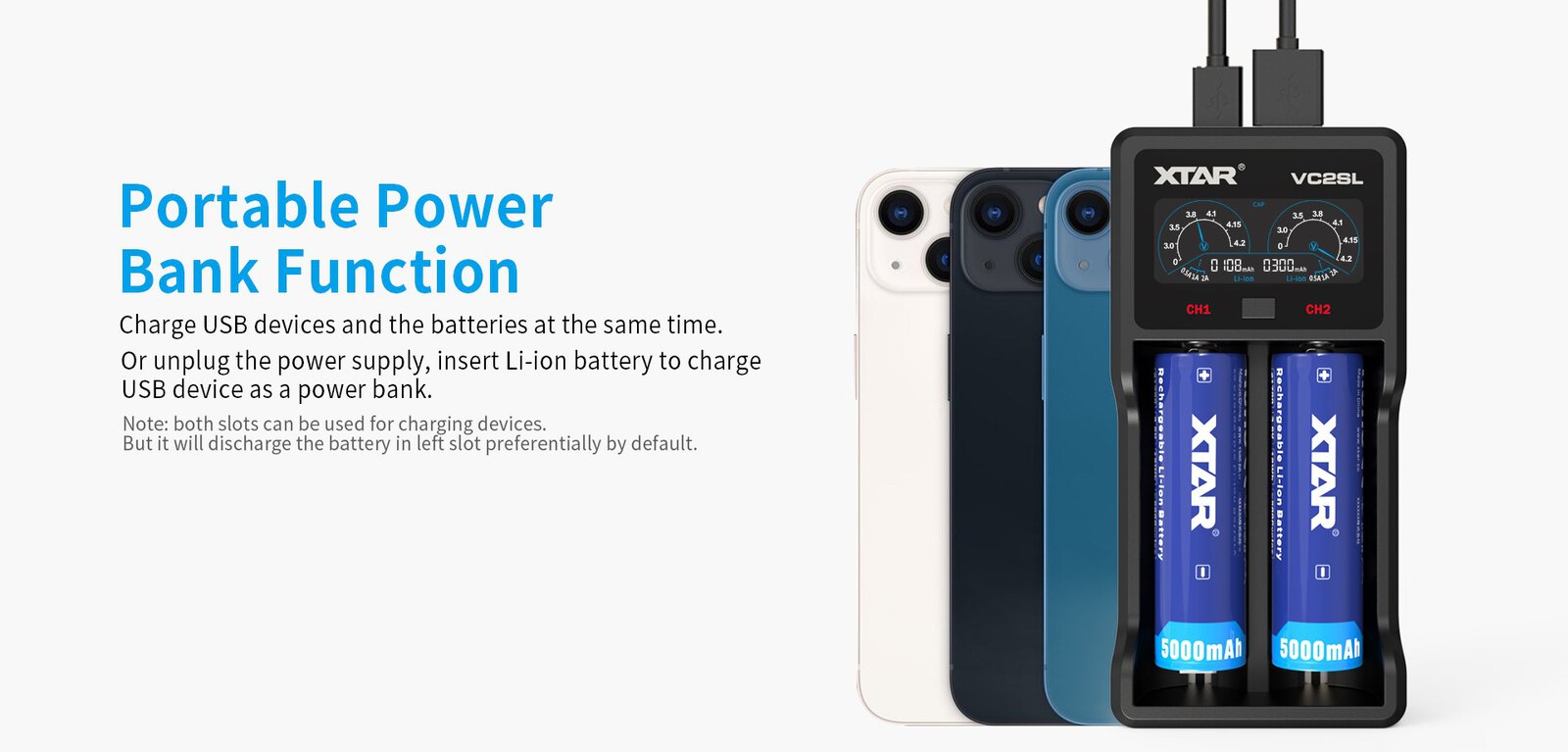
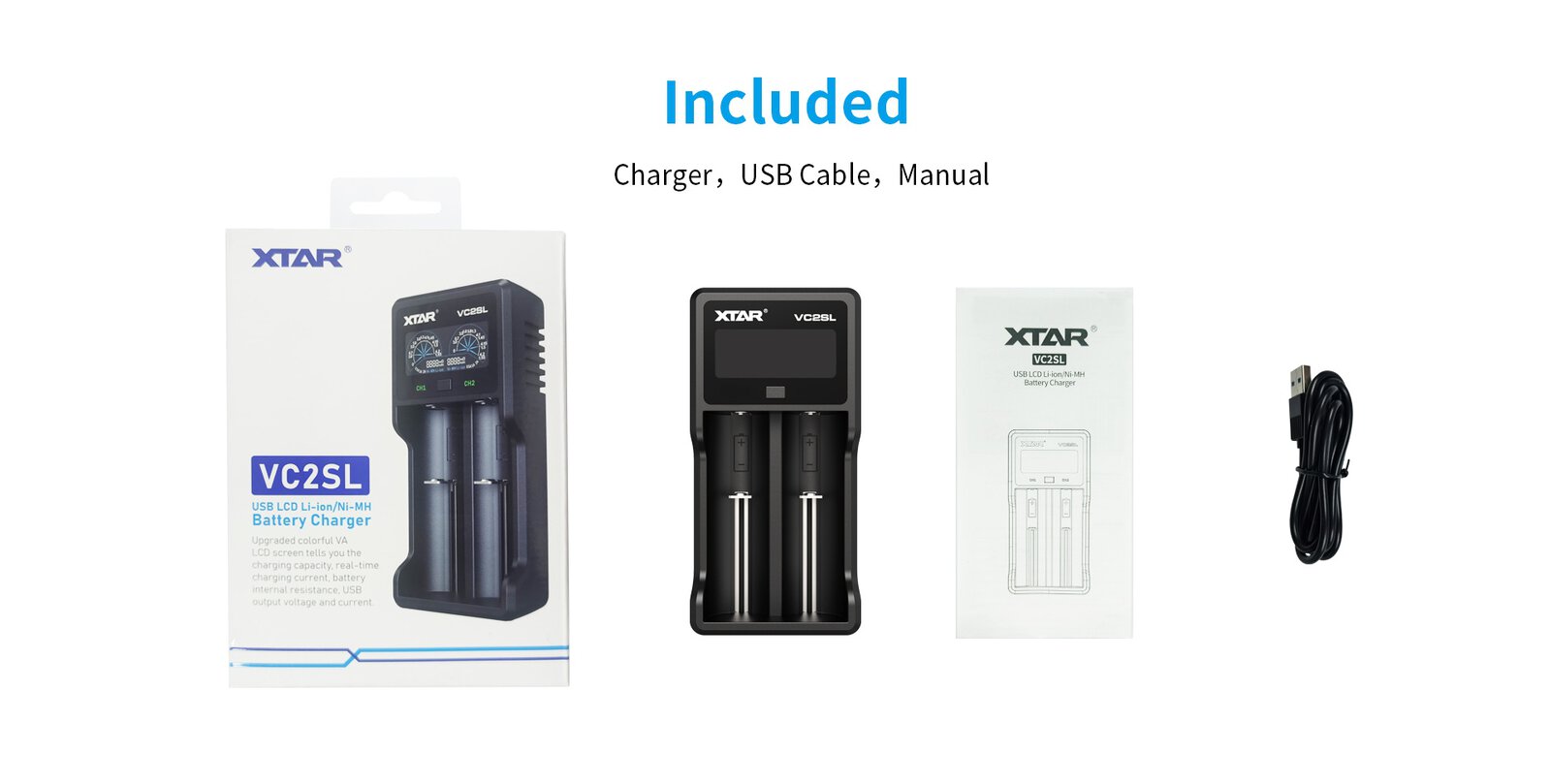
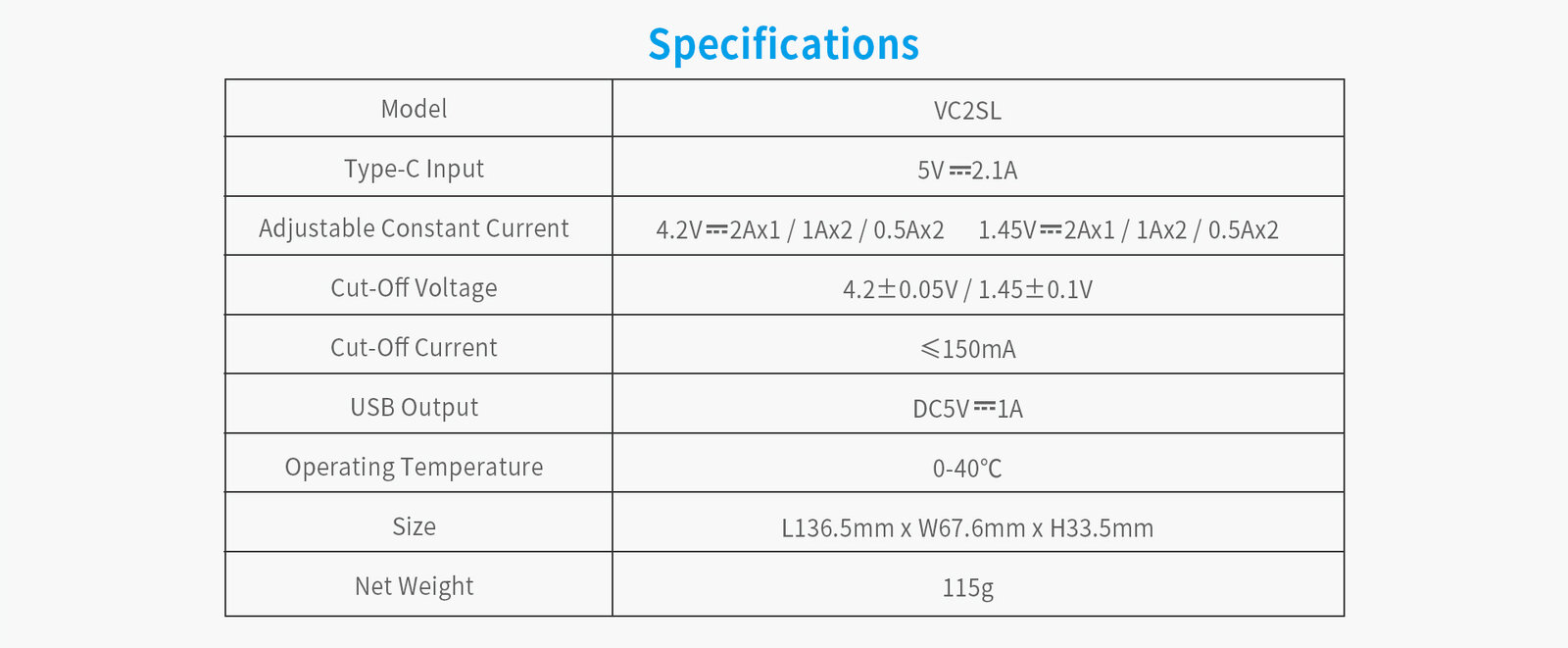

Produkt posiada oznaczenie CE.
- Akumulatory Li-ion 3,6-3,7V, niezabezpieczone
- Akumulatory Li-ion 3,6-3,7V, zabezpieczone (z PCM/PCB)
- Akumulatory Ni-MH
- QC 3.0 (5V/2A | 9V/2A) - gniazdo USB typ C(2100 mA; Kabel USB typ C w zestawie)
- Sterowana procesorowo TC/CC/CV dla Li-ion
- Sterowana procesorowo CC z -ΔV/0ΔV/PVD dla Ni-MH
- 2x1A, 1x2A 2x0,5A
- 4,2V ±0,05V
- Reaktywacja głęboko rozładowanych ogniw i ogniw 0V
- Funkcja powerbanku(5V, max 1A. )
- Przed przegrzaniem ładowarki
- Przed przeciążeniem / zwarciem
- Przed odwrotną polaryzacją ogniw
- Ładowanie (Charge)
- Status pracy / ładowania
- Prąd ładowania
- Napięcie akumulatorów
- Rezystancja wewnętrzna ogniwa
- Ładowarka VC2SL
- Kabel USB typ C
- Akumulatory Li-ion 3,6-3,7V, niezabezpieczone
- Akumulatory Li-ion 3,6-3,7V, zabezpieczone (z PCM/PCB)
- Akumulatory Ni-MH
- QC 3.0 (5V/2A | 9V/2A) - gniazdo USB typ C(2100 mA; Kabel USB typ C w zestawie)
- Sterowana procesorowo TC/CC/CV dla Li-ion
- Sterowana procesorowo CC z -ΔV/0ΔV/PVD dla Ni-MH
- 2x1A, 1x2A 2x0,5A
- 4,2V ±0,05V
- Reaktywacja głęboko rozładowanych ogniw i ogniw 0V
- Funkcja powerbanku(5V, max 1A. )
- Przed przegrzaniem ładowarki
- Przed przeciążeniem / zwarciem
- Przed odwrotną polaryzacją ogniw
- Ładowanie (Charge)
- Status pracy / ładowania
- Prąd ładowania
- Napięcie akumulatorów
- Rezystancja wewnętrzna ogniwa
- Ładowarka VC2SL
- Kabel USB typ C
